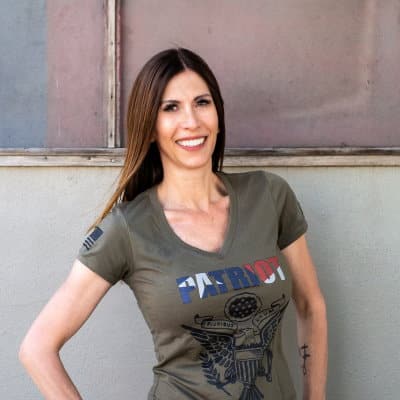When We Can’t Save Them All
October 20, 2022
The following is a guest article from Dr. Tania Glenn Associates PA, who specializes in EMDR therapy.

I recently did Eye Movement Desensitization and Reprocessing (EMDR) on a Firefighter who was in the heart of the chaos during one of the many recent atrocious events resulting in the deaths of first responders. This firefighter transported one of the police officers who made the ultimate sacrifice to an Emergency Room. During the entire ride to the ER, this officer spoke of his children. He shared stories of their personalities and their accomplishments. He talked non-stop as a father full of love and pride. My firefighter patient thought, based on the wounds, that he was going to provide excellent care for the officer and save his life. He arrived at the ER and the officer died a short time later. My firefighter was shocked to learn of this. It shook his core. Years of other traumas decided to rear their ugly heads, as they often do, in the aftermath of a nasty furnace blast trauma. Then the struggle began.
The most pervasive feeling that gets processed by first responders and veterans during trauma treatment and specifically EMDR therapy is helplessness. The feeling that someone could not do their job, change an outcome, arrive any faster or ultimately accomplish the goals of doing their job perfectly to save lives is, to put it plainly, horrific. It is a mental shitstorm that the brain focuses on, replays over and over, and ultimately captures us in a moment. It then holds hostage both the hearts and minds of those who defend, serve, heal and protect.
The problem with unresolved trauma is that the brain always goes to the bad. From an acute stress response to Post-Traumatic Stress Disorder, the human brain focuses on the negative outcome, the lack of ability to achieve the desired outcome, and dare I say the failure. We as humans then begin to mentally flog ourselves, focus on our shortcomings, blame ourselves and fail to see the big picture. Everything in trauma gets skewed towards the bad. This is the hallmark of all mental health struggles.
The key to resolving this boils down to good treatment. During EMDR, in the throws of anguish, pain, horror, disgust and guilt, I ask first responders and veterans to objectively look at their situation. The key here is the fact that during EMDR, when the frontal lobe is fully open and processing trauma, when it is finally allowing the trauma to move from the frontal lobe to the long-term memory, a person is much more open to seeing things in a different light. Suddenly things start to make sense because the brain has finally unlocked the maladaptive message stored from the time of the trauma.
At this point my patient and I can discuss what occurred and how my patient was doing the best they could, given the circumstances. I frequently quote the late, great Dr. Red Duke, who used to explain to EMS personnel that they did not get their patient drunk, put the keys in their hand, put their children unrestrained in the back seat and make them drive 80 miles per hour down the two lane road in the middle of many buildings. Dr. Duke would simply explain that they are there to attempt to save lives, to clean up the mess and to do the best they could with the circumstances they had.
Back to my firefighter – in the middle of his EMDR we discussed the fact that no one could believe the officer made it to the ER based on the severity of his injuries. At this point he recalled that the trauma surgeon mentioned to him that this was the type of injury they could not fix, even if the officer was shot in the operating room. Suddenly things started to make sense. At this point I asked my firefighter to take a deep breath and consider something completely foreign to his entire thought process. I asked him to perhaps consider that his role or his job that night was to be there with the officer, so he didn’t die alone. His job was to take off his boots at the officer’s request so he could be more comfortable. Maybe, perhaps, his reason and purpose that night was to be there so that one day, when the officer’s children need to hear this, he can tell them that they were all he talked about the entire way to the ER.
Many times, the role of the first responder is that of a life saver. But I think we do our first responders a disservice if we don’t also train them that their role can and will be that of a therapist, hospice worker, social worker, clergy and friend. I tell my patients all the time they have honorary Master’s Degrees in counseling, social work and divinity after about five years into this service.
This brings me to thoughts about preventing this type of trauma. In public safety the focus is on the outcome and how to get the job done correctly. It’s about producing an outcome based on success, prevention and basically getting the job done in a way to create the desired outcome. I understand this, along with the fact that there is little extra time when it comes to training. But what if we take a few minutes to acknowledge that we can’t always change the outcome or that the outcome is sometimes not at all what we want? What about explaining that sometimes first responders are there so someone does not die alone?
Another former patient who was first on scene in the aftermath of a tornado that took out an entire town told me that if he ever teaches a triage class, he will not only teach triaging, he will also address how it feels to put red and black tags on people. He said the actual triaging is the easy part. The most difficult part is walking away from an incident where you made the triage decisions.
Recently I did EMDR on two police officers who were shot. They started at a place of horror and helplessness. By the time they processed this trauma, it was all about the fact that they never lost control and they were glad it was them instead of their fellow officers. I did EMDR on a Navy Corpsman who tended to a Marine who was hit by an IED. He put every ounce of gauze he had on this Marine and injected every ounce of morphine he had into him. The outcome was not what he desired. After EMDR he realized his job that day was to be with this Marine, so he did not die alone. He died with caring hands doing everything they could to save his life and to ultimately make his passing as painless as possible.
You all are such amazing, beautiful public servants. You do your jobs with unmatched dedication and passion. You sacrifice so much for the safety and care of others. Please allow yourselves the grace to recover from these furnace blast traumas. Reach out for help. Take a step back, take a deep breath and realize that sometimes your role in the lives of others is to just be the beautiful human being that you are.
Dr. Tania Glenn is the president of Tania Glenn and Associates, a clinical practice in Central TX that is focused on promoting resilience and providing critical care to first responders and veterans. As a leading national clinician in the treatment of post-traumatic stress disorder (PTSD), Dr. Glenn specializes in creating effective programs designed to mitigate traumatic stress and to assist patients with their return to normalcy as quickly as possible. As a licensed clinician with thirty years of experience, Dr. Glenn deployed to the Oklahoma City bombing in 1995, New York City in 2001, New Orleans for Hurricane Katrina in 2005, and Dallas in 2016 for the aftermath of the attack on the Dallas Police Department. Recognized nationally, Dr. Glenn’s clients include a host of Texas and Arizona Police, Fire and EMS Departments, commercial aviation, and air medical programs. She is the Clinical Director for several peer support teams with her unique perspective on special operations competencies.


